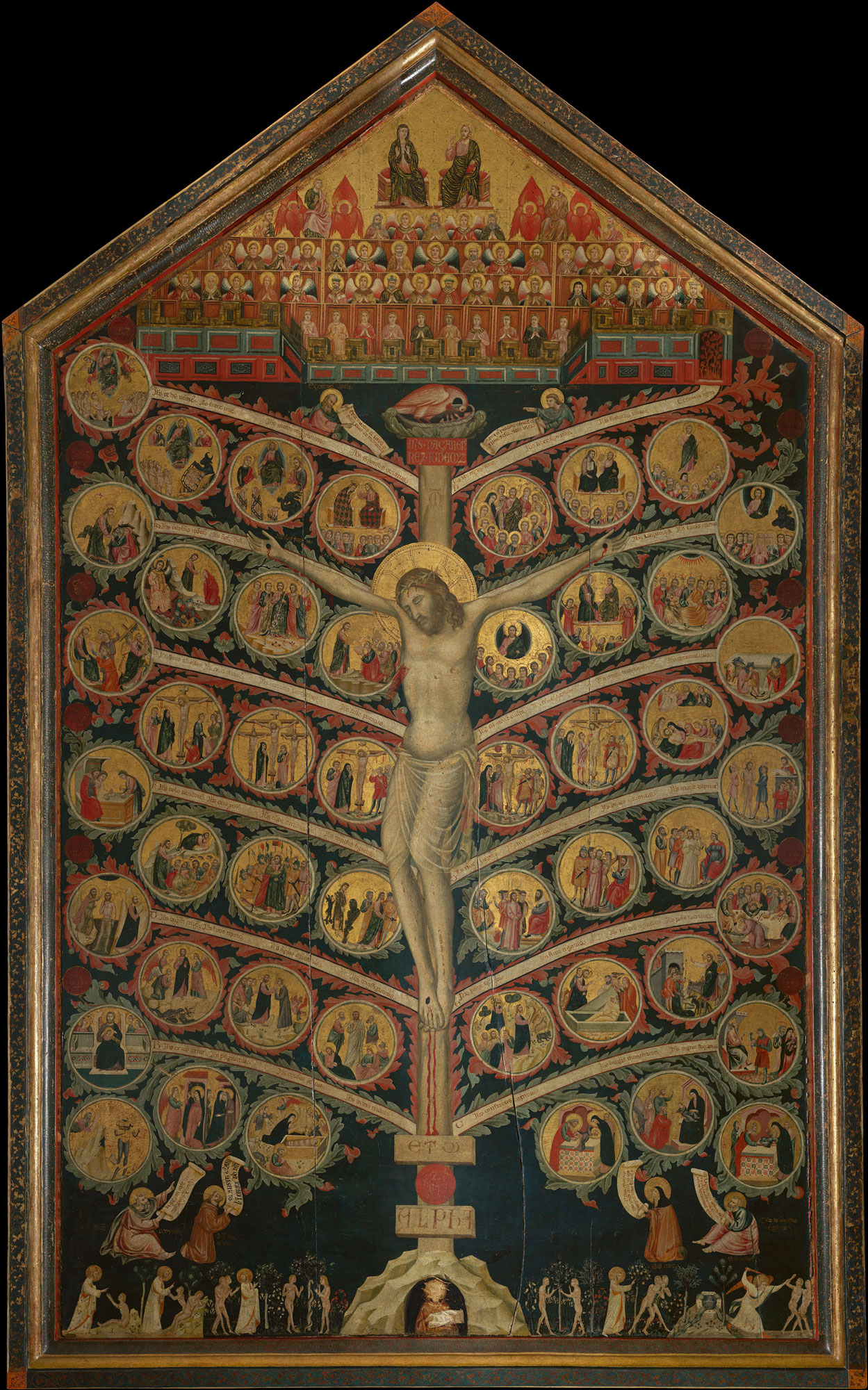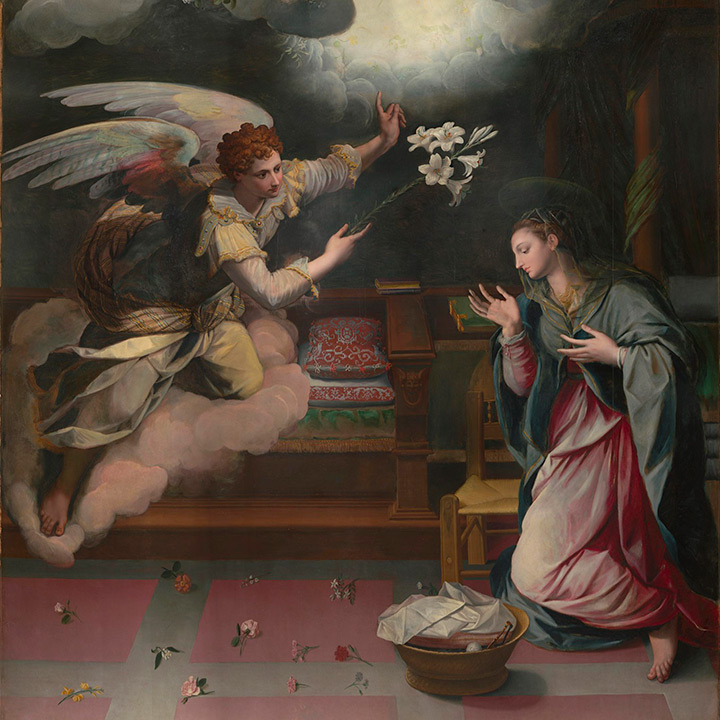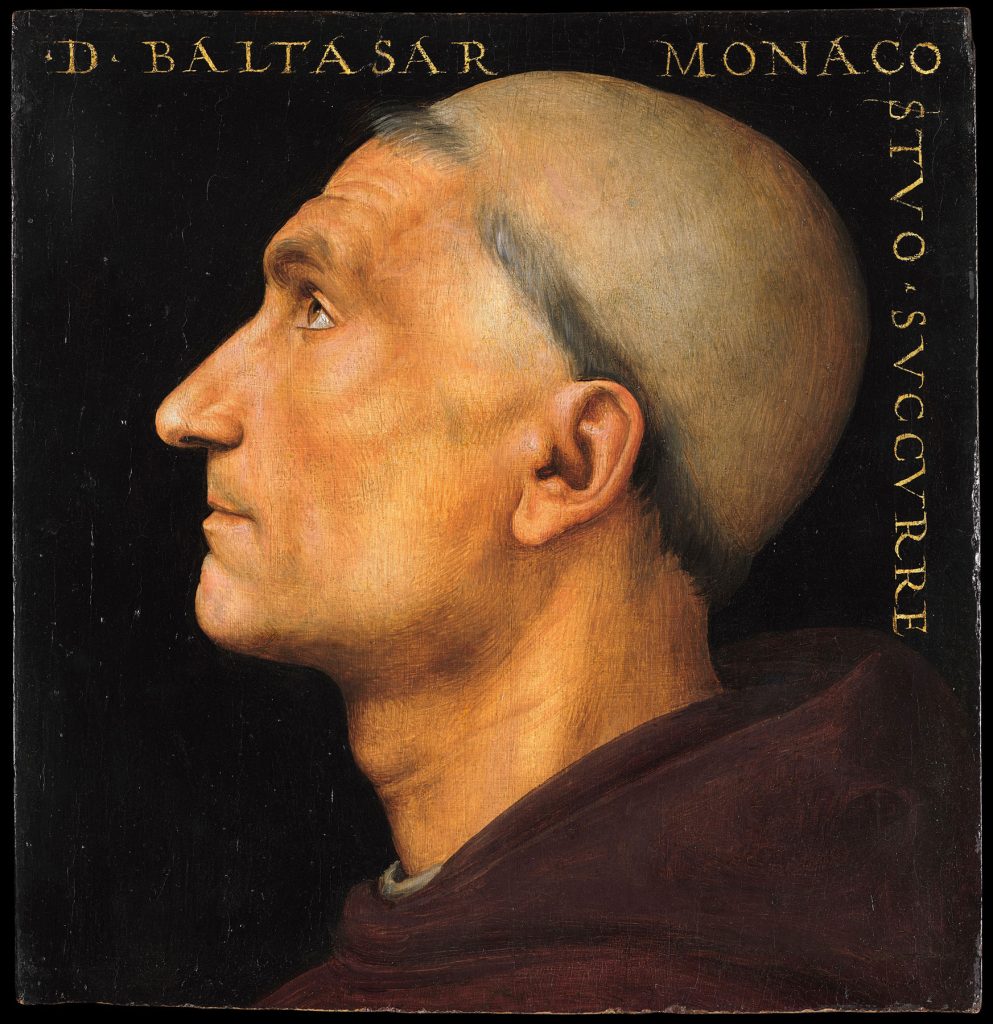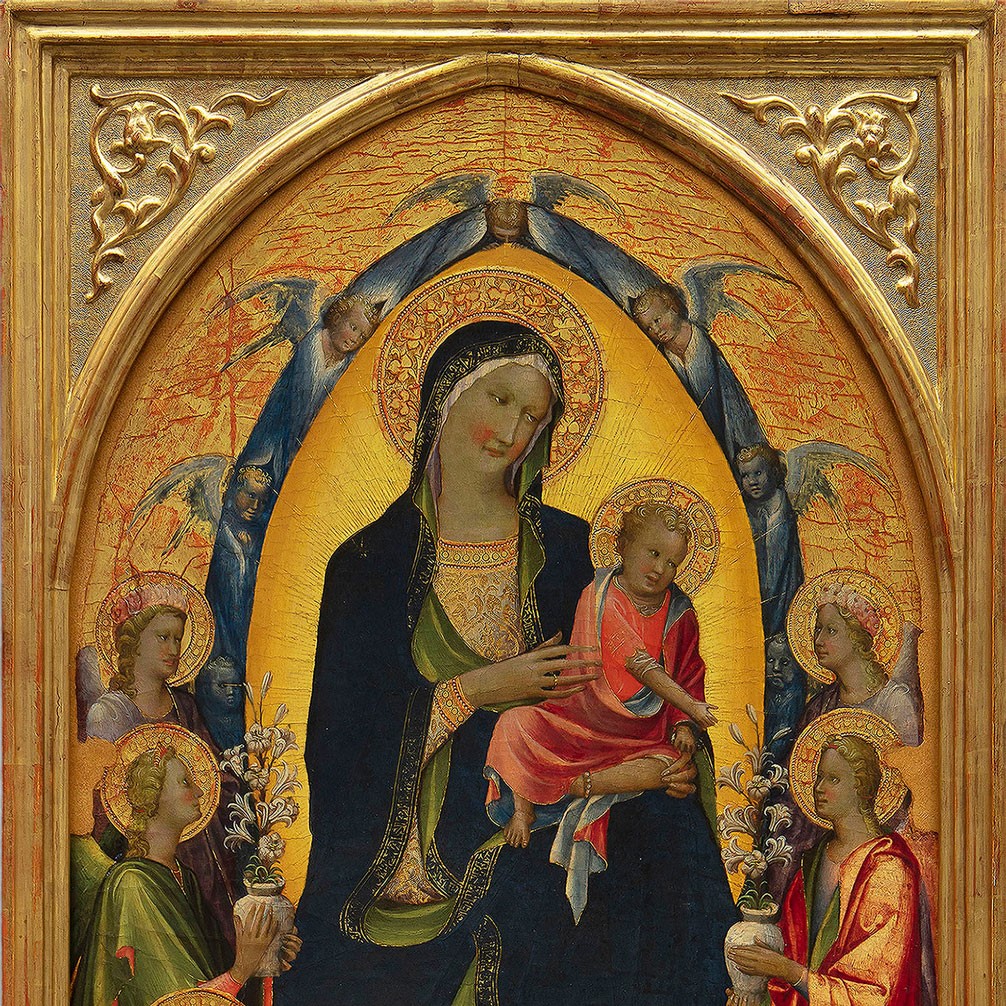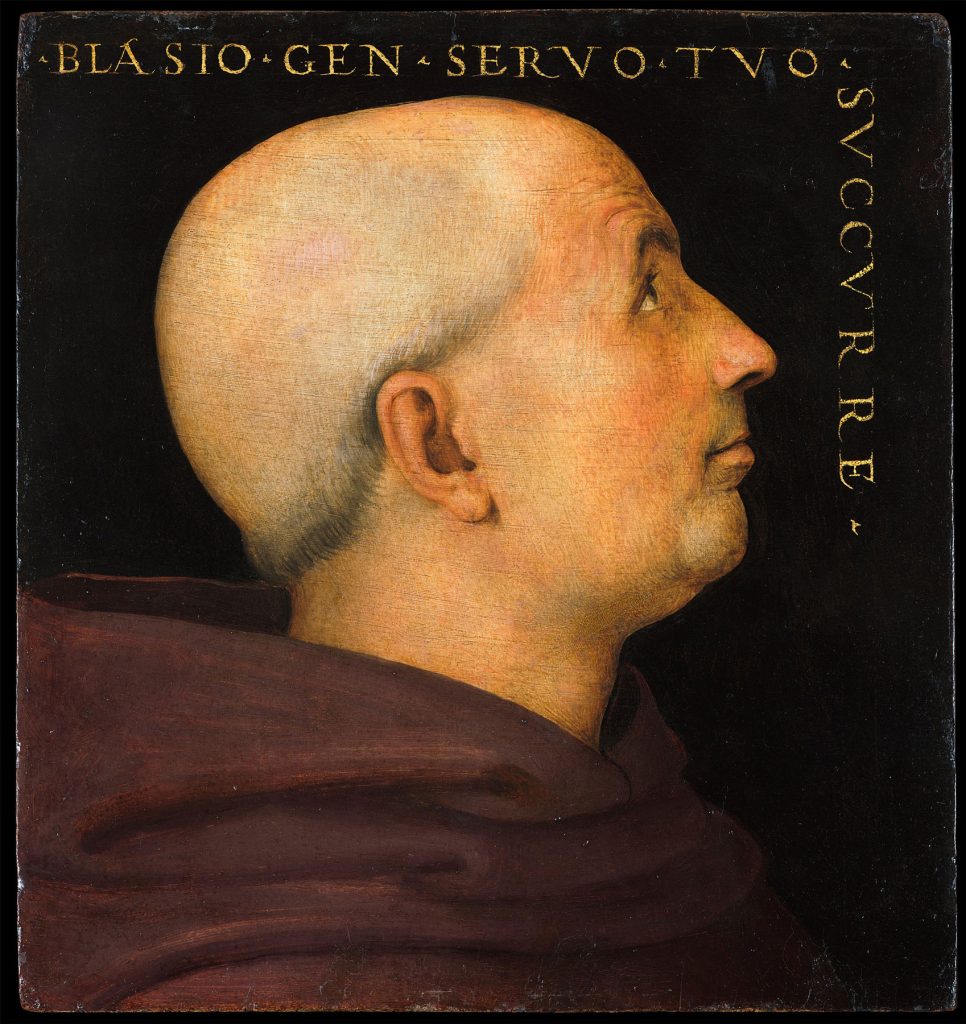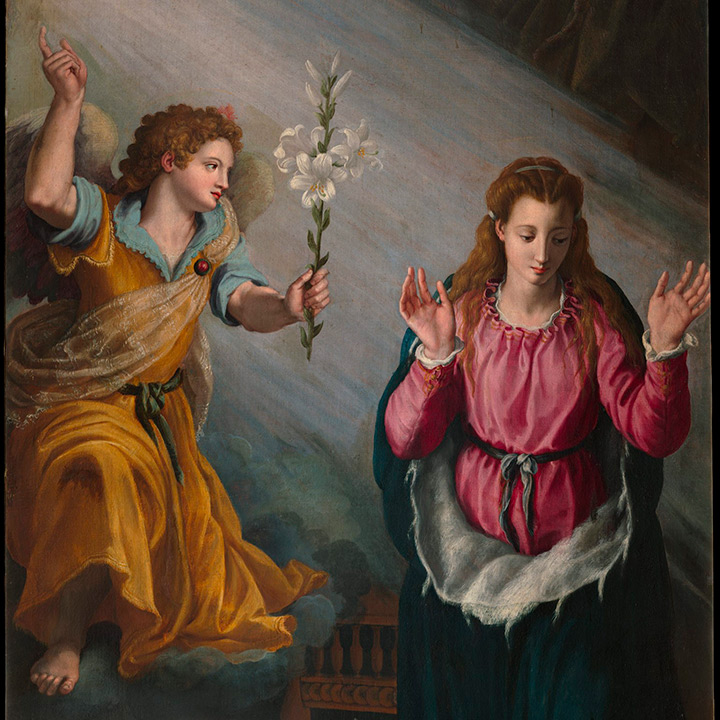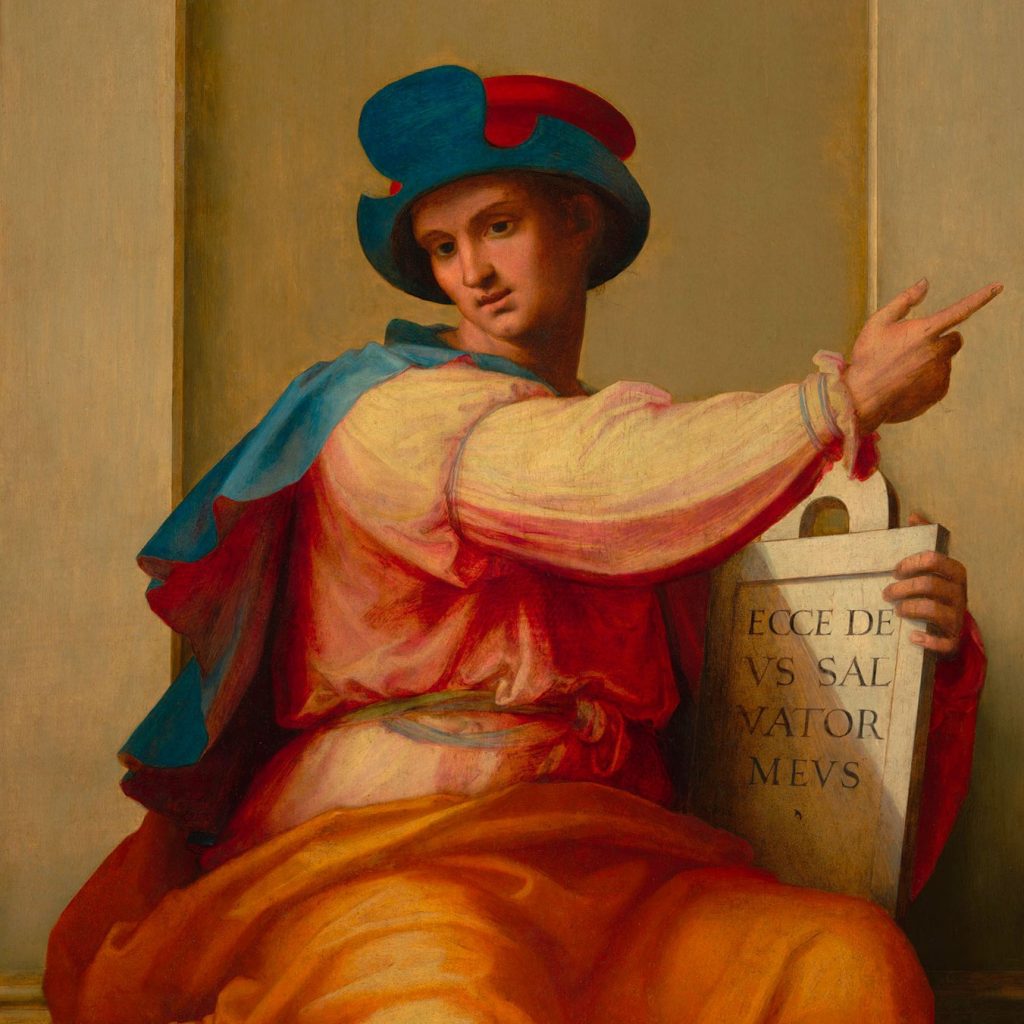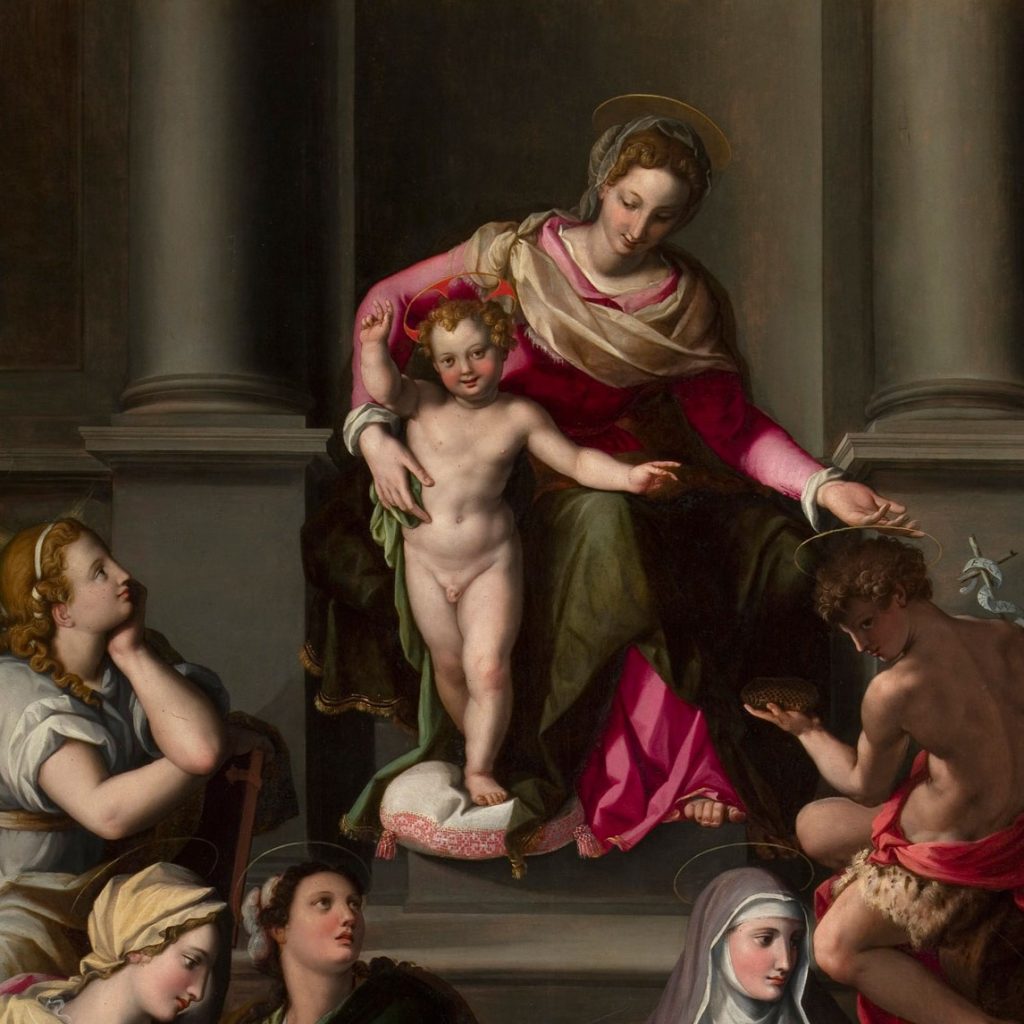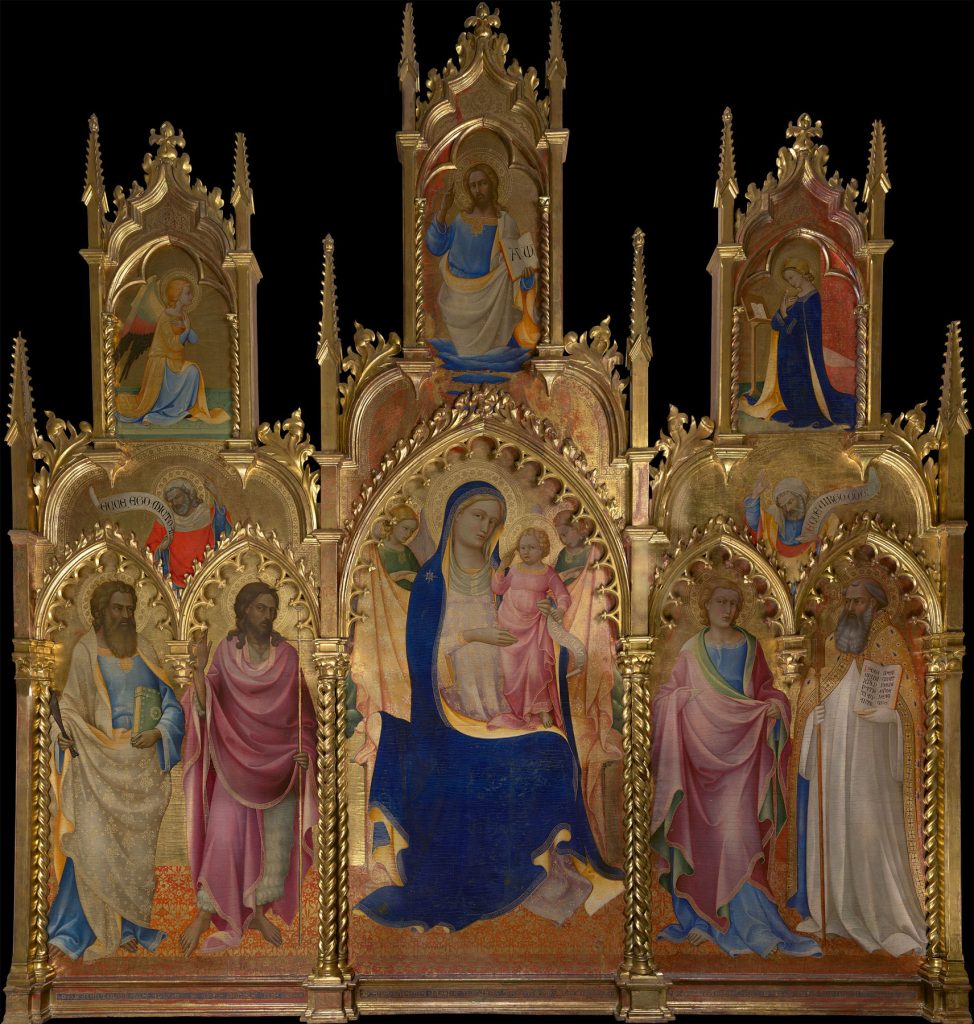The Tree of Life (Scenes from the Life of Christ)
Pacino di Bonaguida
Florence, documented from 1303 to c. 1330
PAINTING
Data sheet
- Author: Pacino di Bonaguida
- Date: 1310 - 1315
- Collection: PAINTING
- Technique: Tempera and gold on wood panel
- Dimensions: 248x170,5 cm (with frame)
- Inventory: Inv. 1890 n. 8459
Artwork
This painting is the visual interpretation of Lignum Vitae, a text by the the Franciscan Bonaventura da Bagnoregio, which traces the mystery of the origins of humanity, the Passion and the glory of Christ. To help the reader, Bonaventure employed a tree diagram, which was turned into an image on the large altarpiece by the Florentine artist Pacino di Buonaguida. He was the main exponent of a pictorial movement of the early 14th century that, although inspired by Giotto, was characterised by a great narrative vivacity, referred to as the ‘miniaturist tendency’.
Pacino painted twelve branches that are grafted onto the wood of the cross of Christ. At the end of each branch there is a red apple, where once there was a verse illuminated in gold that revealed the twelve mysteries of Jesus’ life: joyful, sorrowful, and glorious. Each fruit/mystery is a subject for meditation, the text of which is written on the branches, each associated with an episode from the life of Christ. They are intended to be read from left to right starting from below and moving upwards. The last inscription on the upper right refers to the vision of Paradise that occupies the entire upper part of the panel. Below, scenes from Genesis are depicted on both sides of Golgotha, where a cave shelters the figure of Saint Bonaventure holding an open text, probably the Lignum Vitae. Immediately above are the figures of Moses, Saint Francis, Saint Clare and Saint John the Evangelist holding scrolls; at the top of the tree, the prophets Ezekiel and Daniel unfurl two more.
In the final medallion in the upper right corner, along with the nine apostles struck by the rays emanating from Christ, there is a Franciscan nun without a halo: this may be Saint Clare’s sister, Agnes, who was for some time head of the Florentine Monastery of the Poor Clares of Monticelli, the place of origin of the work. The complex iconographic scheme was designed to meet the needs of the nuns, who were often illiterate, in their daily meditation on the divine mysteries and in the recitation of liturgical texts, the content of which was difficult for them to understand.
